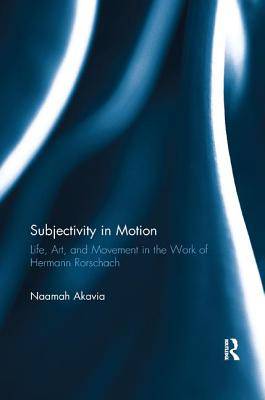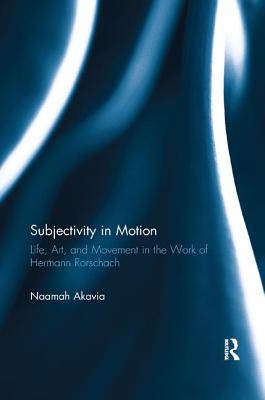
- Afhalen na 1 uur in een winkel met voorraad
- Gratis thuislevering in België vanaf € 30
- Ruim aanbod met 7 miljoen producten
- Afhalen na 1 uur in een winkel met voorraad
- Gratis thuislevering in België vanaf € 30
- Ruim aanbod met 7 miljoen producten
Omschrijving
The motif of human movement has long been understood as central to Hermann Rorschach's strikingly innovative inkblot experiment. But owing to Rorschach's untimely death a year after publishing his famous work, Psychodiagnostics, the world has lacked an adequate understanding of how he came to put so much stress on human movement in his unique perceptual theory. Now historian Naamah Akavia changes that with her illuminating study of the intellectual and clinical development of this Swiss pioneer. Based on new archival researches and an unprecedented appreciation for Rorschach's milieu and his times, Subjectivity in Motion: Life, Art, and Movement in the Work of Hermann Rorschach is destined to become an instant classic in the history of psychology and psychiatry--and an important new contribution to our understanding of how movement figures in modernity generally. The historian will appreciate the intricate analysis of Rorschach's engagement with a wide variety of figures and movements ranging from Mourly Vold and Freud to Jung and Eugen Bleuler, from schizophrenia to Russian Futurism and Eurhythmics, from the word association experiment to the works of Alfred Kulbin and Ferdinand Hodler. But it is the psychologist who will benefit most profoundly from this richly detailed exploration, for the topic of human movement, how it is perceived, and how that figures in personality generally will never quite look the same again.
Specificaties
Betrokkenen
- Auteur(s):
- Uitgeverij:
Inhoud
- Aantal bladzijden:
- 208
- Taal:
- Engels
- Reeks:
Eigenschappen
- Productcode (EAN):
- 9781138108240
- Verschijningsdatum:
- 24/05/2017
- Uitvoering:
- Paperback
- Formaat:
- Trade paperback (VS)
- Afmetingen:
- 152 mm x 229 mm
- Gewicht:
- 452 g

Alleen bij Standaard Boekhandel
Beoordelingen
We publiceren alleen reviews die voldoen aan de voorwaarden voor reviews. Bekijk onze voorwaarden voor reviews.













